.fb-comments,.fb-comments span,.fb-comments span iframe[style]{min-width:100%!important;width:100%!important}
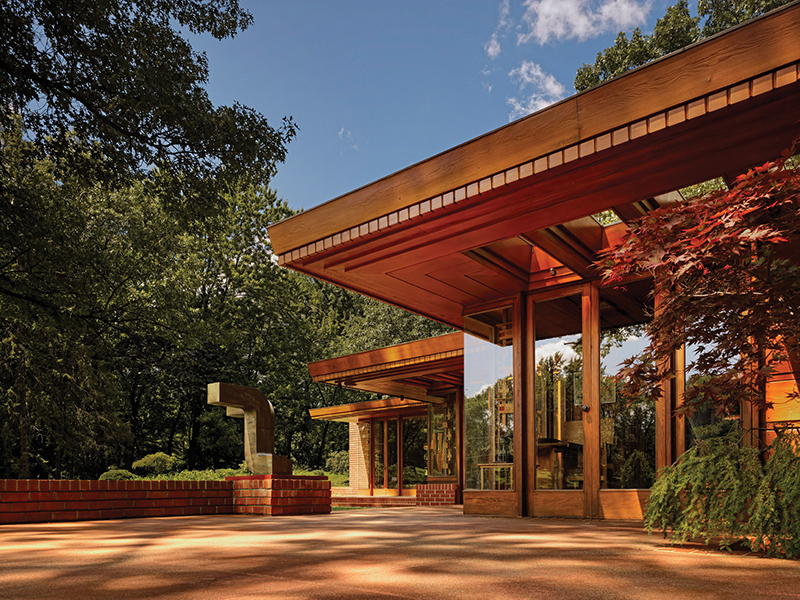
One doesn’t have to go far in metro Detroit to find some of the most beautiful examples of Midcentury Modern design, whether they be renovated homes, collected furnishings, or intriguing museum exhibits and tours.
“There’s so much modern history here because of Cranbrook Academy of Art, CCS [College for Creative Studies], and other venues,” says Tom Gibbs, owner of Midcentury emporium Tom Gibbs Studio in Ferndale. “Designers like Eames, Bertoia, the Saarinens — these are the folks who shaped the face of American Midcentury design. It’s a never-ending piece of Michigan history, how all these icons are connected.”
He’s referring to design greats including married couple Charles and Ray Eames — who studied at Cranbrook Academy of Art in Bloomfield Hills — famous for their iconic Eames Lounge Chair and Ottoman, among other designs. Harry Bertoia attended both CCS and Cranbrook. His famous diamond chair was a sculptural piece of art made from a welded lattice of steel. Architect/designer Eliel Saarinen designed the campus of Cranbrook Educational Community, where he taught and became president of the Cranbrook Academy of Art. His son, Eero, taught courses in sculpture and furniture design at Cranbrook and turned out such designs as the famous Tulip and Womb chairs.
Local art historian Deborah Lubera Kawsky, whose specialty is Midcentury Modern design, explains that the term denotes a time ranging from the late 1930s to the late 1960s. It has come to evoke both the style and the spirit of that era.
“It encompasses clean lines, free-flowing spaces, built-in furnishings, and a bold color palette,” Kawsky says. It’s also a recognition of the power of design — facilitated by then-new technologies such as Thermopane glass, fiberglass, and Formica — to enhance modern living in the post-War era.
This “new concept of beauty” for the modern era, Kawsky says, was brought to life by Midcentury design pioneers in For Modern Living, a groundbreaking exhibition of modern design for the home, which ran at the Detroit Institute of Arts in 1949. The exhibition featured a series of fully furnished rooms that captured the magic of the era.
Kawsky sees a resurgence of interest in the Midcentury Modern style, especially here in the Detroit region.
“The rediscovery of Detroit has brought about a rediscovery of the Midcentury Modern period in Detroit. Whether in the business world or scholarly or in the great institutions or organizations like Design Core Detroit, we’re naturally looking back. There’s such a synergy here, a creative vortex, with Cranbrook, the DIA, [furniture maker] Herman Miller Inc., [architect] Minoru Yamasaki — all in Michigan. They all produced so many incredible designs,” says Kawsky, who has lectured on Midcentury design at the Detroit Institute of Arts, Cranbrook Art Museum, and Palm Springs Modernism Week. “These visionaries all believed that modern design could make people’s lives better.”
Detroit’s Midcentury Modern influence can be observed as a large textile pattern brimming with a mosaic of unique color, form, and shape, with captivating repeats, all connected, but each a world unto itself.
The following are just a few ways to explore the immense fabric that makes up the area’s Midcentury Modern universe.
Your Guide to Midcentury Modern Design in Metro Detroit
Read all about it // Take a tour // Find something special // Shop the style // Learn local history // Update a Midcentury gem // Think like a pro
Read all about it
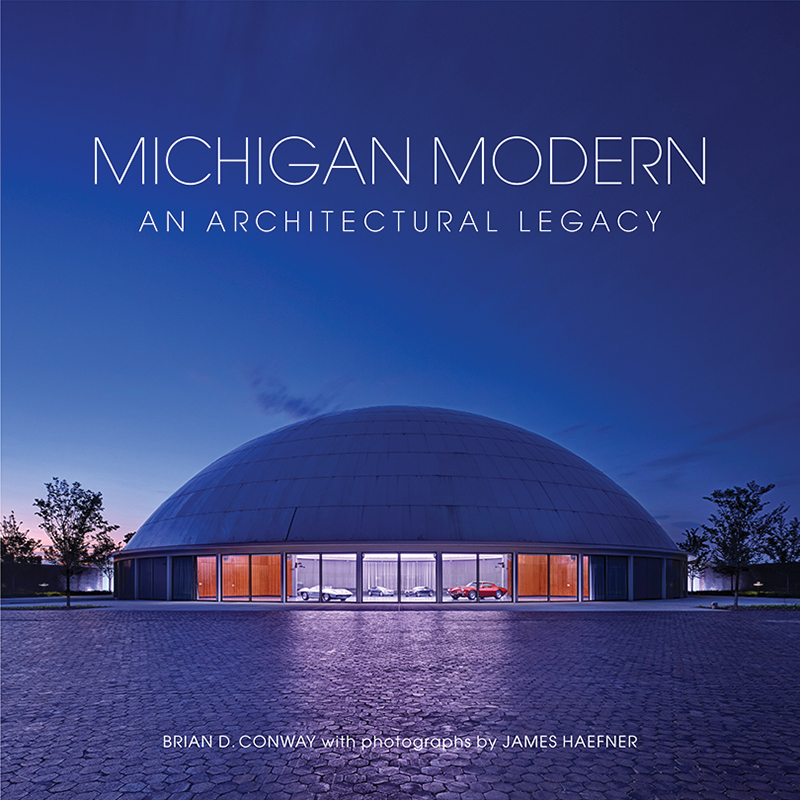
Michigan Modern: An Architectural Legacy (2018, Visual Profile Books) takes readers on a tour of iconic buildings and interiors designed by some of the world’s most renowned and celebrated architects and interior designers.
The 300-page book features text by state historic preservation officer Brian D. Conway and more than 200 inviting color images by photographer James Haefner. Each of the 34 featured projects is carefully documented to record its place in art history as well as the story behind both its architect and client.
If you’re in the Traverse City area, you can see the book come to life at the city’s Dennos Museum Center, where an exhibit of the same name runs through Jan. 31. Visitors will learn about the state’s modern design history through more than 50 photographs by Haefner, mostly shot for the State Historic Preservation Office as part of its Michigan Modern Project, along with several from his own archives.
The exhibition includes images of Michigan masterworks by modern architects such as Eliel Saarinen, Eero Saarinen, Minoru Yamasaki, Alexander Girard, Ludwig Mies van der Rohe, and others. The project, which began in 2008, elevated three properties to National Historic Landmark status: the Eero Saarinen-designed General Motors Global Technical Center in Warren, the Mies van der Rohe-designed Lafayette Park housing complex in Detroit, and Yamasaki’s McGregor Memorial Conference Center in Detroit. (The Eliel Saarinen-designed Cranbrook and the Alden B. Dow Home and Studio were already listed as National Historic Landmarks.)
The exhibition will move to the Marshall M. Fredericks Sculpture Museum near Saginaw in April.
For more information, visit dennosmuseum.org or marshallfredericks.org. Michigan Modern: An Architectural Legacy ($40) is available at visualprofilebooks.com.
Take a tour
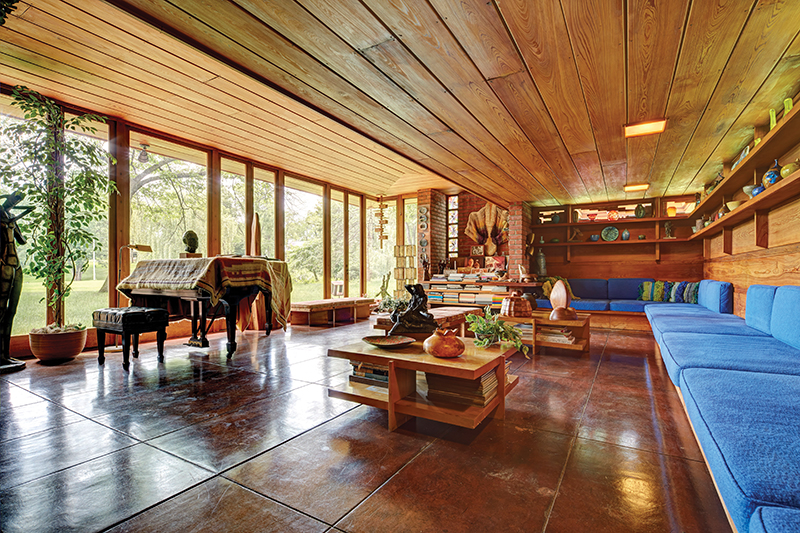
Cranbrook is known as the “cradle of Midcentury Modernism” thanks to the legacy of its Academy of Art alumni, says Cranbrook Educational Community publicist Eric Franchy.
Under the direction of Eliel Saarinen, Cranbrook Academy of Art’s first president and head of the Architecture Department, the Academy influenced the talents of so many students, including designers Charles and Ray Eames and Harry Bertoia, corporate office design pioneer Florence Schust Knoll, architects Ralph Rapson and Harry Weese, textile pro Ruth Adler Schnee, and many others.
The best place for visitors to experience architecture from this period, Franchy says, is on a tour of the nearby Frank Lloyd Wright Smith House. Wright, one of the best-known American architects to this day, designed more than 1,000 structures over some 70 years. There are many Wright-designed homes and summer cottages in Michigan. The influential architect believed in what he called organic architecture, designing in harmony with both humanity and its environment.
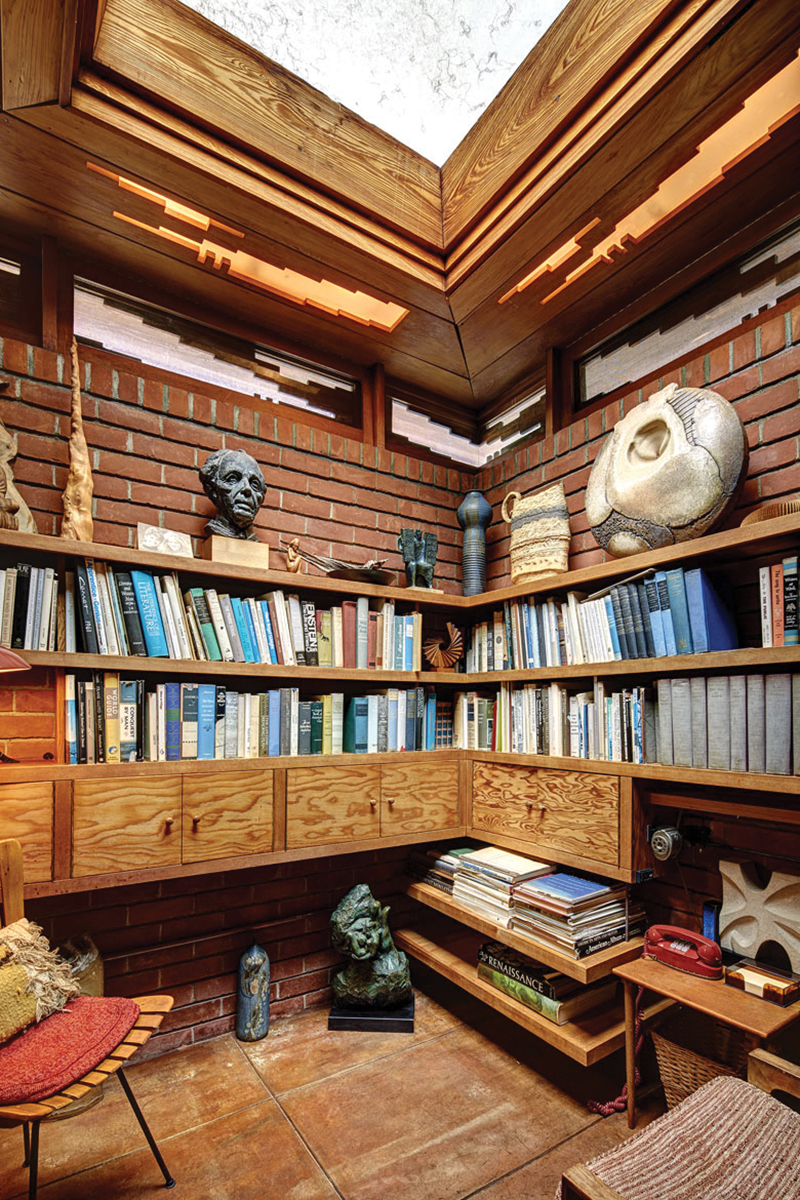
Tours of Smith House are offered by Cranbrook Center for Collections and Research. Visitors will experience a taste of this 1950 design and its surrounding landscape and learn the story of the couple whose vision and determination allowed them to achieve their dream.
Schoolteachers Sara Stein Smith and Melvyn Maxwell Smith, undeterred by their modest salaries and guided by a shared love of architecture, hired Wright to build their Bloomfield Hills home. An excellent example of Wright’s Usonian ideal, the home exemplified the philosophy of building quality houses for the American middle class. It also features basic building materials and a strong connection to the landscape.
The Smiths referred to their home as “My Haven” and furnished it with artwork from Cranbrook Academy of Art artists, including Marshall Fredericks.
Tours of Smith House are offered Fridays, Saturdays, and Sundays at 1 p.m. through Nov. 29. Reservations are required. Visit center.cranbrook.edu.
Find something special
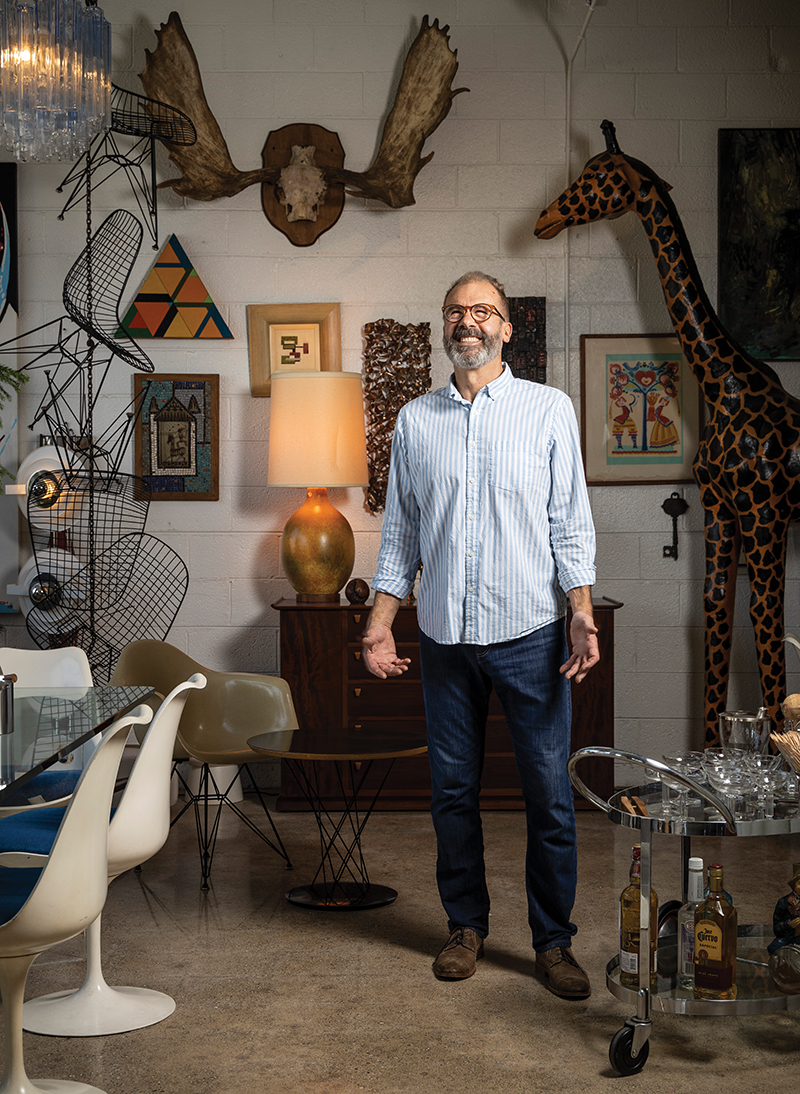
Furnishings purveyor Tom Gibbs wasn’t always a table and chair man.
“I was into cars when I was younger,” says Gibbs, owner of Tom Gibbs Studio in Ferndale, “and did automobile restoration and repairing for 20 years, which gave me a feel for fit, finish, construction, symmetry, and those things.” Fast-forward a few years, and he’s now a Midcentury go-to guy for design enthusiasts around the world looking for everything from period flatware to living room furniture.
At Gibbs’ emporium, which totals nearly 6,500 square feet and is open online, in-person by appointment, and for special exhibits and programs, shoppers will find lighting, side chairs, barware — you name it. All of his pieces are period and vintage.
“I see a modern piece of furniture and it gives me a visceral type of joy inside,” says Gibbs, who grew up on Long Island and now lives in Pleasant Ridge. “I like to look at it. Everything you see is part of the item; there’s nothing hidden or covered up.”
Gibbs says one of his favorite pieces in his private collection is a super-early Eero Saarinen Womb Chair that was a prototype and never went into production. “It’s beige or sand-colored with a worn original fabric. You can see where it’s welded with square nuts, probably from 1948,” he says. “It will be researched for possible sale.”
The lover of decades-old items says he’s always on the lookout for additions to his shop. He visits local auctions, estate sales, flea markets, and even yard sales. “I always stop in shops when traveling, whether they’re selling used furniture and antiques or it’s a consignment store.” He also does some online shopping. Gibbs encourages customers to call him if they’ve got something to sell. “Or bring the item in,” he adds.
The bottom line: “We look for quality of design and manufacturer, and esoteric. I don’t want to have items for sale and there are 20 others just like it.”
For more information, visit tomgibbsstudio.com.
Shop the style
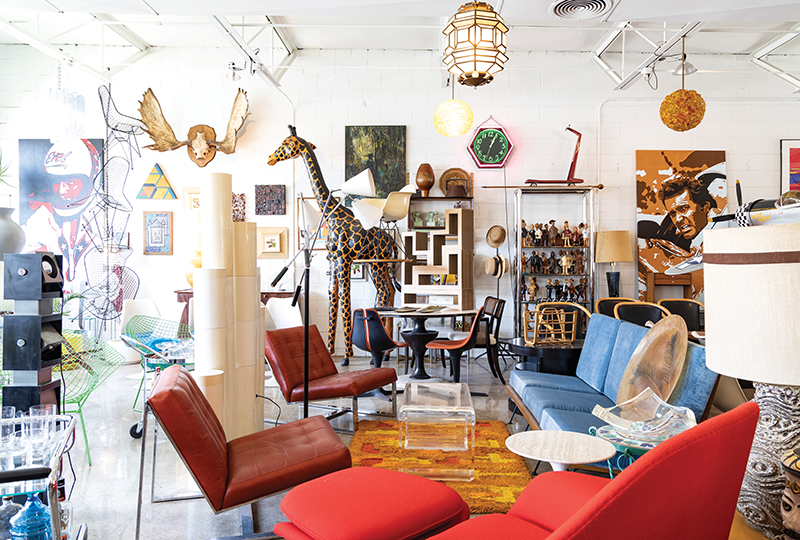
Interior designer Elin Walters’ favorite way to adorn a home is with both vintage and new pieces that reflect the Midcentury vernacular.
“Fifty percent vintage would be the perfect world,” says Walters, who runs Exactly in Ann Arbor. “I always say if you want soul and character, let me incorporate the secret sauce, which is something vintage.”
Walters contends that a look can be “cold and hollow if everything is new and ordered online.”
Here, Walters offers her favorite shops for finding everything Midcentury, from sofas to glassware.
Le Shoppe Too
3325 Orchard Lake Road, Keego Harbor; leshoppetoo.com
“It has a huge inventory and is high-end, from art to lounge chairs.”
Mad4Mod
24790 Hathaway St., Farmington Hills; mad4mod.space
This shop is on Walters’ must-see list. She hasn’t been there yet, but she’s scoped it out on Facebook. There’s “decent turnover and possibly some good deals,” she says. “Lots of great furniture.”
ModMart Detroit
932 W. 14 Mile Road, Clawson; facebook.com/ModMartDetroit
“There are high-end pieces and it’s well-curated,” says Walters, who has spied everything from sculptures to sideboards here.
Salt City Antiques-Depot Town
115 W. Michigan Ave., Ypsilanti; facebook.com/SaltCityAntiques115
“There’s lots of great stuff here with reasonable turnover. Some restored, some mint, some less than perfect. You’ll find clothes, dishes, furniture, records, and more.”
Tom Gibbs Studio
2014 Hilton Road, Ferndale; tomgibbsstudio.com; open by appointment only; call 610-730-8309
“This spot features refined, high-end pieces,”Walters says. “And everything here is in mint condition.”
Vogue Vintage
2141 Hilton Road, Ferndale; www.facebook.com/voguevintage101
This boutique has pieces that are generally competitive in price, and “most affordable and eclectic,” Walters says. “Everything from drinking glasses to sunglasses.”
Learn local history
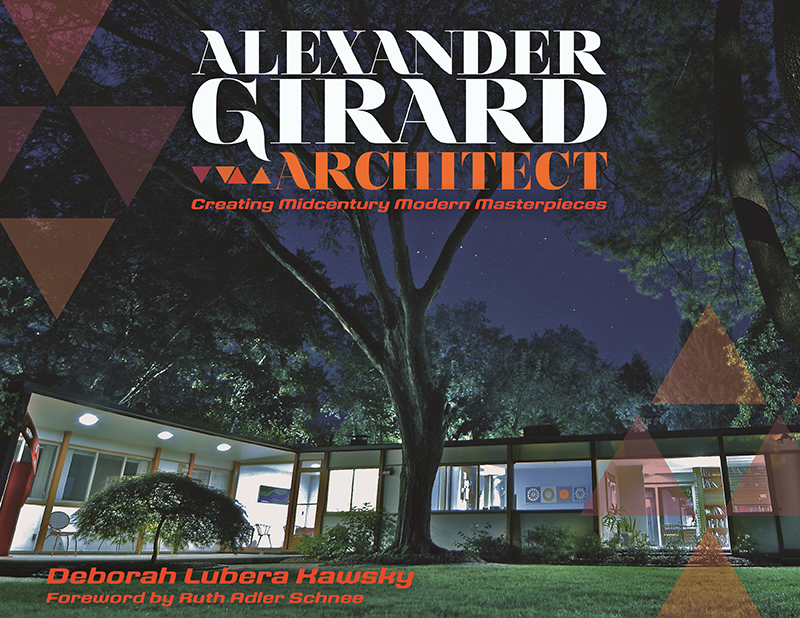
When Deborah Lubera Kawsky’s brother and his wife — Robert and Mary Lubera — were looking for a home in the Detroit area in 2009, they stumbled upon a treasure.
“They walked into this 1950 single-story home in Grosse Pointe Farms and noticed boldly glazed brick walls, lots of wood and glass, and free-flowing spaces,” say Kawsky, who lives in Plymouth and teaches art history at Madonna University. “The realtor said, ‘We’re just here for a minute,’ but they walked around and fell in love with the house. After they bought it, they saw the name Alexander Girard on the blueprints, and they asked me to do some research.”
Soon, Kawsky discovered that Girard was heavily involved with textiles at Herman Miller Inc., based in Zeeland, Michigan, and created fabrics for design gurus George Nelson and Charles and Ray Eames. She then connected with renowned textile designer Ruth Adler Schnee of Southfield, who became the home’s design consultant. “Ruth was intrigued by the home, as it survived largely intact since it was built. Think of it: Beneath a shag rug, the homeowners discovered original pink-and-white harlequin-patterned tiles from 1950!”
Kawsky calls it the McLucas House after the couple who commissioned it, Detroit power couple Jack and Kitty McLucas.
In 2016, the historian contacted Wayne State University Press, and two years later, the book Alexander Girard, Architect. Creating Midcentury Modern Masterpieces was released.
“It was great to be with a Detroit press, based where a lot of Midcentury style was born,” Kawsky says. The book expands to explore Girard’s other projects — he was, among other things, color consultant for the General Motors Global Technical Center in Warren.
“He designed three homes in the area, including a rehabbed home for himself and one with Minoru Yamasaki. One was for the inventor of Benadryl, and that one has what’s believed to be the first conversation pit-style living room,” Kawsky says. “But it’s the McLucas home that truly is the best of what was happening in Midcentury design.” That home, she says, showcases all of the Midcentury design elements, including freedom, honesty, lightness, simplicity, and naturalness. “The house is also the physical manifestation of all of the design projects Girard worked on while here in Detroit,” Kawsky says.
Her newest focus relates to the groundbreaking For Modern Living exhibit curated by Girard at the Detroit Institute of Arts in 1949. She hopes it will include a 2024 exhibition that celebrates the 75th anniversary of For Modern Living and explores what’s next in Detroit design.
Alexander Girard, Architect. Creating Midcentury Modern Masterpieces is available at wsupress.wayne.edu or amazon.com.
Update a Midcentury gem
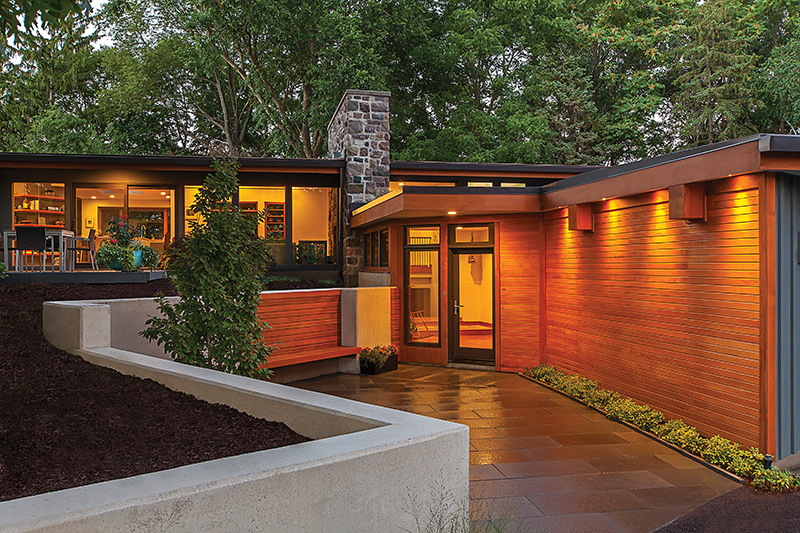
Brad and Theresa Angelini of Angelini & Associates Architects in Ann Arbor are passionate about Midcentury architecture. Two of their favorite Midcentury projects that their firm worked on are remodels of actual Midcentury Modern homes.
“Thanks to the University of Michigan attracting some very good designers during the 1940s, 1950s, and 1960s, Ann Arbor has a large stock of this style home,” says Brad Angelini, who started his business in 1989. Today, a team of 10 makes up the busy firm that soon will move from its longtime Ann Street location to a historic, 1859 renovated barn a mile away.
“We’ve had the opportunity to remodel a number of these homes, and it’s always a treat. We love the style’s aesthetic, so our designs are sensitive to the theory and style,” Angelini says. He refers to one of the projects as the House on Huron Hills. It was originally designed by Colvin, Robinson, Wright. Another project, Barton Hills North, was originally designed by Tivadar Balogh, a partner with architect Robert Metcalf.
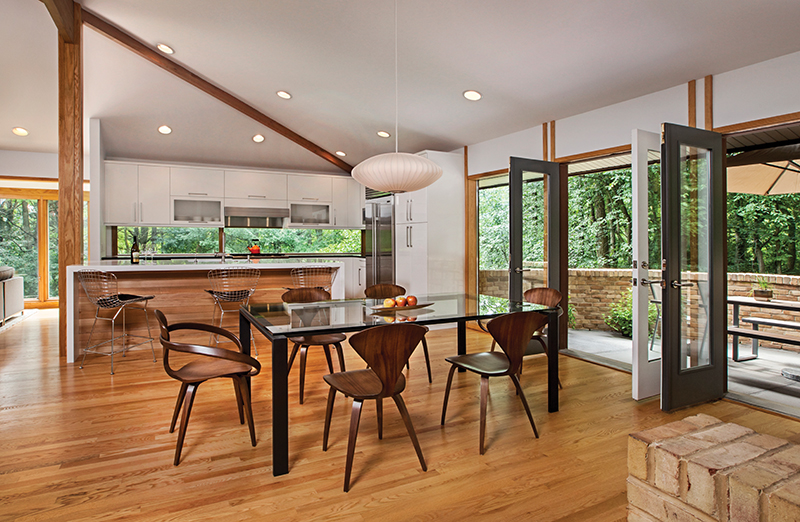
“In both homes, the kitchens were tiny, dark, and enclosed, and the bathrooms were almost unusable,” Angelini recalls. For the Huron Hills project, the Angelinis worked with the Michigan Design Center branch of modern Italian kitchen/bath design company Scavolini to create a beautiful kitchen. “It was a wonderful pairing of new, open kitchen space and interesting cabinetry,” Angelini says. Meanwhile, the public spaces were in pretty good shape, but the bedrooms and private spaces were very small compared to today’s standards.
“For the House on Huron Hills, we added a new front entry because the original entry was hidden behind the garage and guests would arrive through the side door or the garage,” he says. He notes living standards have changed since the day these beauties were built. So, the remodelers’ challenge is to accommodate today’s homeowners while enhancing the original design.
“What I like about Midcentury design is that it’s kind of stripped down and simple and there’s a place for everything and everything in its place — all those built-ins for tchotchkes and clutter,” he says with a laugh.
The Angelinis estimate there are some 1,000 homes that showcase the Midcentury vernacular in their neck of the woods. An interesting reflection: The Angelinis contend that these Midcentury homes are perfectly addressing the needs of today’s homeowners who want to age in place. “So many are one floor, and that works well for aging in place,” Theresa Angelini says. “It’s also easy to make them more accessible.”
For more information, visit angeliniarchitects.com.
Think like a pro
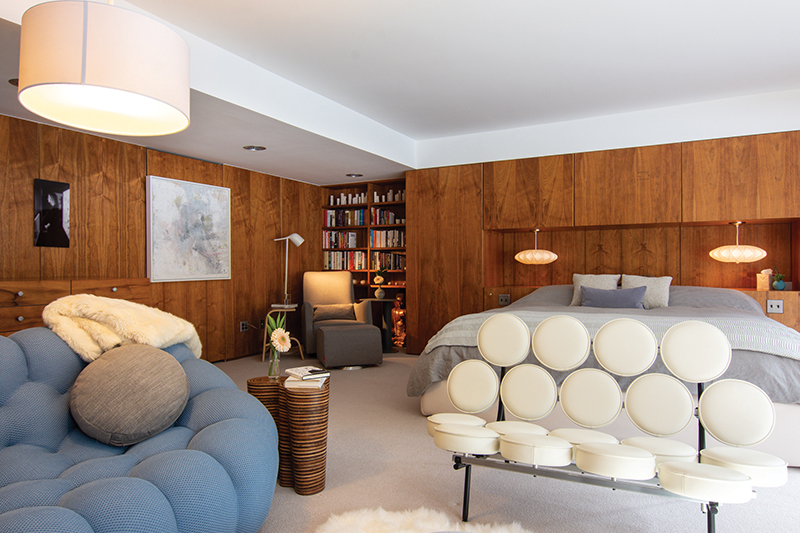
iWhen interior designer Elin Walters was a little girl, she gravitated toward the color orange.
“My mom tells me that when I was 2 years old, the only thing I wanted for Christmas was an orange washcloth. And orange has been my color ever since,” Walters says.
The bright, cheery pop color has almost always been associated with Midcentury Modern design, as have pinks and turquoises. But this interior designer, who runs Ann Arbor-based Exactly, didn’t fully catch Midcentury fever until much later in life. Although she loved the style’s colors and appeal after growing up with two art collector parents and living in a 1970s Palm Springs-style home, it wasn’t until she and her husband bought a 1958 Midcentury, ranch-style beauty in Ann Arbor 11 years ago that she got hooked.
“The home had so many great original elements. We decided it should be designed and decorated as authentic to its period as possible,” she says. She chose lamps from her parents’ collection to adorn the home and also added a huge orange Finnish chandelier in the kitchen. “It’s a big flower and sets the tone,” she says.
“I also love the Malm orange fireplace we put in. Malm’s heyday was in the Midcentury, and they produced units in bright colors, in a variety of interesting shapes, including our wood-burning, stand-alone enamel style. We ended up designing our addition so that the fireplace was not only the central piece in the room, but also the focus.”
Walters, her realtor husband, and their merged family of five children also created a whimsical wall of Lego bricks near the entryway. “The home is unique and colorful, and the kids’ friends love to hang out here,” says Walters, a former personal trainer and fitness instructor who now designs strictly in Midcentury style.
“Here in Michigan, we have great Midcentury history, and it’s becoming more popular,” she says. “I try to educate people who want to get rid of things like tiles from that era and tell them not to. Now we’re pushing the salvaging of these houses in the right direction, especially with Detroit coming back and 20- and 30-somethings having an appreciation for this aesthetic. It’s timeless, simple, clean, and not fussy.”
Walters is currently working on a new-build, 6,500-square-foot Midcentury-style home in Fenton. The challenge? “Finding contractors who understand the aesthetic,” she says.

You must be logged in to post a comment.